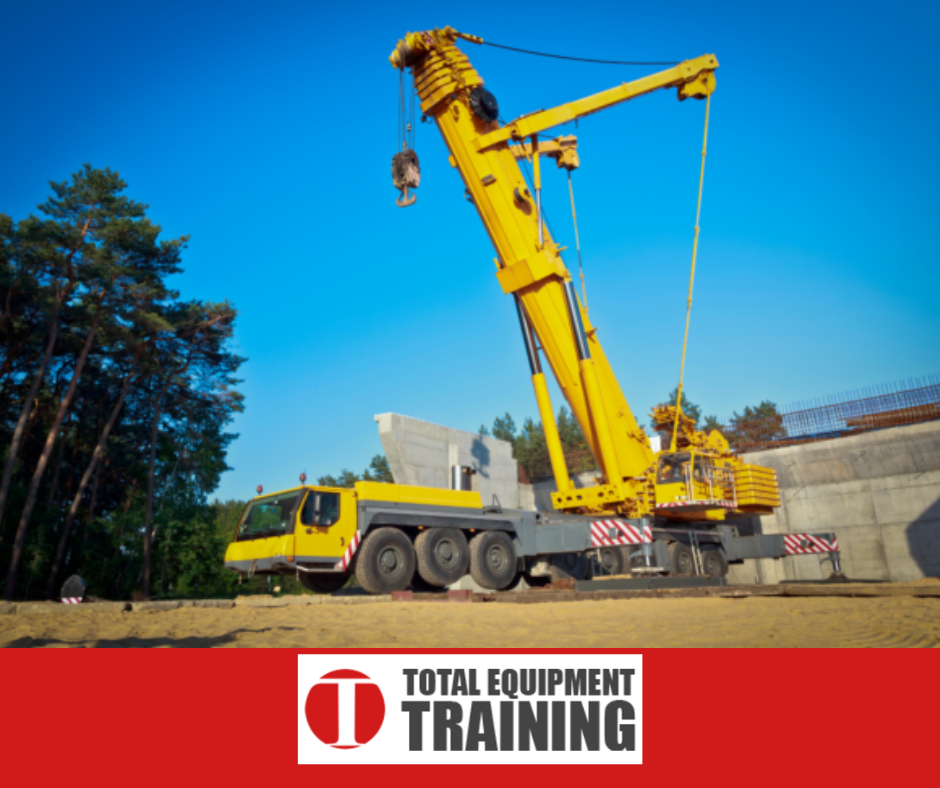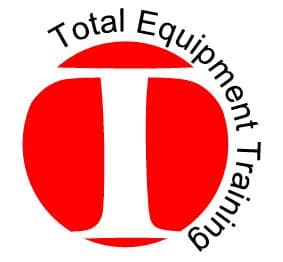
Accidents in the workplace are unfortunately inevitable. The means to cope with this hard fact is to mitigate the effects of these accidents. Mobile cranes, a core component of the heavy and construction industries’ equipment range, are no exception to experiencing accidents. These accidents may lead to the damage of precious loads, damage to structures, and even loss of life.
Schedule Mobile Crane Safety Training
Top Four Causes of Mobile Crane Accidents
Contact with Power Lines
In the heavy and construction industries, electrocution accounts for one of the top 5 leading causes of worker fatalities. Electric currents move at great speed and can deliver enough voltage to cause death in seconds, leaving a very small window -if any- for recovery.
Although most power (and communication) cables have overhead setups, it is also common to have them underground, which once dug up and exposed, present an electrocution hazard.
The worker or operator does not have to be in physical contact with the power line, but can get electrocuted from within the mobile crane itself, if (for instance) the boom comes into contact with power lines. Most mobile crane cabins are not electrically insulated, allowing for the conduction of electric current.
Electrocution Hazard Avoidance
Power lines are common in urban work sites, with the current they carry capable of causing severe harm to personnel. Modern equipment heavily relies on digital components, which sufficient electric current can render useless.
-
- OSHA requires that all overhead lines in the worksite be grounded or de-energized.
- Any equipment operating near power lines must maintain a minimum distance of 10 feet (approx. 3 meters)
- Crane operation personnel and site workers should have electrical PPE when working in sites near, or with several, power lines.
- Proper site inspection should be done well before crane operation, to provide ample time to arrange for power line de-energization, and assess power line locations (including underground).
- It is safer to have all site staff consider all overhead lines as live, even telephone lines and de-energized power lines.
Overturns
When working on uneven or unstable ground, mobile cranes are likely to tip over, and cause damage not only to the equipment itself, but the surrounding structures and people as well.
Other factors leading to overturns may lie within the mobile crane itself. Common causes include the overextension of the boom at inappropriate angles, and faulty/improper deployment of outriggers/stabilizers. Operator manuals give co-relating limits for loads, boom extensions and operation angles, which if exceeded, shift the crane’s center of gravity and cause an overturn.
Overturn Avoidance
-
- Carry out site pre-inspections to assess the surface the mobile crane is to be deployed on.
- Ensure the mobile crane operator is aware of the manufacturer’s limits and has necessary reference material at hand.
- Regular inspection and maintenance should be done on the mobile crane to ensure it maintains function within its original limits
Mechanical Failure
This refers to the malfunction of any of the mobile crane’s components, and is mainly caused by wear and tear from repeated operation. A damaged component alone may not be enough to cause a failure in operation, but the cascading effects may end up damaging other components in good operating condition.
Due to its general ambiguity, mechanical failure can be quite expensive to remedy and if left unchecked, may become the root cause for other types of accidents.
Mechanical Failure Avoidance
Mobile cranes with faulty stabilizer systems and/or poor setup conditions are liable to collapse or shift during operation. This can pose hazards from falling loads, or impacts of the mobile crane to structures or personnel.
-
- Ensure mobile crane operators correctly use the equipment. (E.g., exceeding load limits and lifting loads at angles)
- Carry out thorough inspections in good frequency, staying alert on delicate and high priority components.
- Proper maintenance of the crane should be done to prevent accumulation of excess rust, soot, or dust on the components.
Falling Loads
If a load detaches from the mobile crane’s hoisting mechanism, it immediately introduces a crushing hazard that can prove fatal. Structures underneath the hoisting path may also suffer damage, not to mention the load itself.
Falling loads may be caused by a number of factors, most commonly including: faults in the hoist mechanism (broken cable, twisted hooks), improper rigging, inclement weather (high winds), and obstruction during load movement.
Falling Loads Avoidance
Workers in the Fall Zone not only puts personnel at risk from falling objects, but ‘struck-by’ hazards as well. These kind of accidents very often result in severe or fatal harm, hurting both worker and employee alike.
-
- Ensure that all rigging is done by competent and/or qualified riggers (depending on the nature of the work; the more intensive, the greater the skill required)
- The load path should be free of any personnel during load movement.
- Inspection before load hoisting and movement done by (employer sanctioned) competent person
- Hoisting equipment should be in good operating condition
Other issues such as rigging failure and poor weather are also main causes of mobile crane accidents. Improper rigging of the load to the mobile crane’s lifting apparatus is a leading cause of falling object hazards. This can severely injure personnel or damage nearby structures. Inclement weather such as strong winds, heavy rain and snow can endanger crane operation; mainly through uncontrolled shifting of raised loads, buckling from slipping, and tipping from a loss in balance. If in doubt, cease all crane operations immediately.
In order to encourage adherence to its safety regulations, OSHA penalizes any violators, with statistics for common crane violations available here.
Mobile Crane Accident Statistics
- The most common fatal accidents are from personnel being struck by objects (e.g., moving loads) or equipment, accounting for just over half of all crane accidents –according to data from the U.S. Bureau of Labor Statistics collected from 2011 to 2017. Struck-by accidents are followed by falls and electrocution as leading fatal accident causes.
- In the same years, Texas had the highest number of mobile crane accidents, more than the next three states (Florida, New York and California respectively) combined.
- OSHA (Occupational Safety and Health Administration) is the national organization for regulation creation and standards enforcement. In October 2022, a case was opened against Joyce Crane, a crane company for the fatal accident of one of their employees. OSHA fined the company for a ‘serious’ class violation, costing up to $15,625. The higher the severity of the OSHA violation, the greater the penalty paid –exclusive of damages and compensation.
- Even internationally, accidents often result in heavy fines and penalties for both operators and employer companies. Such as:
- Australia 2021-2022: Contractor (Multiplex Constructions Pty Ltd) and crane operation (RAR Cranes) company paid 150,000 and 300,000 AUD respectively in fines after the crane overturned and struck a crane operator.
- Lancashire, UK 2011: Baldwins Crane Hire is fined 700,000 pounds following a brake system failure that ended in the crane operator’s death.
- Singapore, 2001: Chong Kee Ling, a mobile crane operator was charged 8,000 Singaporean dollars for carrying out a lift operation that violated safety practices.
How to Avoid Mobile Crane Accidents
Crane Inspection
The mobile crane must be inspected before operation by a competent person before every deployment. This should be followed up by monthly and intensive annual inspections to gauge the crane’s performance capacity.
Site Conditions
The crane’s deployment work area should be visited and assessed for potential hazards, preferably by all relevant staff, so that a safe working plan can be created and implemented.
Proper Crane Setup
Always set up the mobile crane on stable surfaces, free from obstruction or interference from other structures, work vehicles/equipment, and personnel activity.
Power Lines Proximity
OSHA requires a minimal working distance of 10 feet (approx. 3 meters) for cranes working near power lines. Crane operators and related personnel should always assume any nearby overhead lines (even telephone cables) are live and carry current. It is however, strongly recommended that any cables near or at the site are grounded or disconnected before crane operations begin.
Rigging Inspected
Before any hoist is carried out, a competent person must inspect the rigging for proper functionality. This reduces the risk of rigging failure and any subsequent harm or damage. The rigging team should also be sufficiently trained, and preferably certified.
Practice Lift
Rigging and crane operation personnel should collaborate on carrying out a thorough practice lift before work operations. Practice lifts test both parts simultaneously, and should be used to set baselines for stress limits, operation speeds and expected work results after operations.
Clear the Working Area
This is especially important for site personnel moving about the workspace. The Space under any crane lift should be cleared, unless certain OSHA conditions are met.
Signal Person Present
Signal persons provide a dedicated communication platform to the crane operator, and by extension, the entire workforce. Their availability on site has proven to greatly increase both safety and efficiency, as they often have perspectives unavailable to the crane operator.
Crane Operator Trained/Certified
This is perhaps the most important safety feature!
Schedule Job Site Safety Training
Mobile Crane Safety Training
Mobile crane operator training is essential for safe and efficient use of any mobile crane across the country. With proper training, the mobile operator will be aware of any hazards present and possible that they may encounter during crane operation. Total Equipment Training has assembled skilled and experienced professionals from across the country to create a comprehensive Mobile Crane Operator Training Program. This team is also composed of eagle-eyed Mobile Crane Inspectors who maintain current and qualitative OSHA standards. Reach out to TET for these and a comprehensive array of heavy/construction training programs and services.

